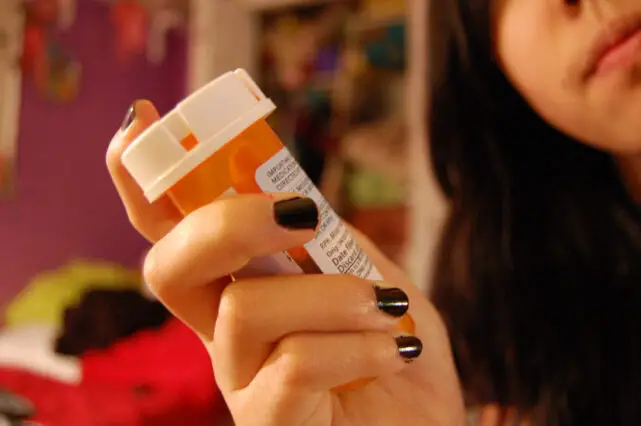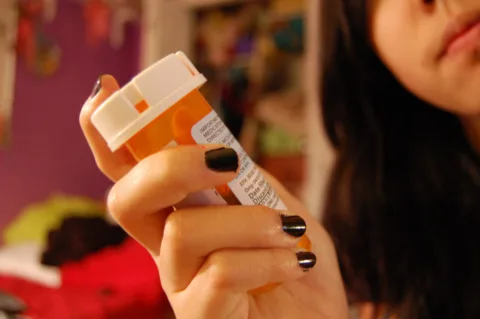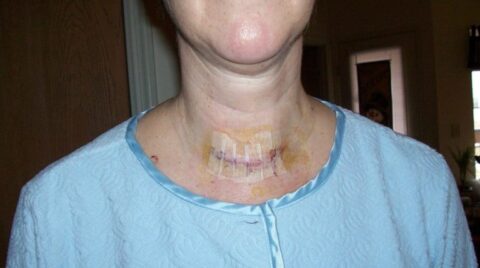As mentioned earlier, Lyme Disease was the last thing my doctor’s office tested for when I started having strange symptoms for no reason. And after I was diagnosed, they were just as confused about how to treat Lyme Disease.
At first, they weren’t sure if my symptoms were the result of something viral, bacterial, or what. So the doctor immediately put me on 2-week course of antibiotics and Prednisone (mostly for the swelling I think).
Following are all of the meds that I’ve tried, and what I’ve learned about Lyme Disease treatment since this all started…
The Meds My Doctor Prescribed Right Away
During that 2-week course of antibiotics and Prednisone, I quickly realized it was the Prednisone that was having the biggest effect on alleviating my pain and swelling — because I took it in several doses throughout the day, and I could tell when it was getting time for another dose (my body would start to tighten up and get sore again).
So after 2 weeks of the antibiotics and Prednisone, I went off the antibiotics — without incident.
At the same time, I tried to go off of the Prednisone as well. But the symptoms immediately came right back.
When I couldn’t walk again the next morning, I went back to the doctor for another series of tests and another round of Prednisone until we could get to the bottom of this and start some real Lyme Disease treatment regime.
The only thing we knew for sure was that there was clearly something inflammatory going on in my body — and the Prednisone was helping.
Now I find this little gem about Lyme treatment:
Above all, do not let your doctor treat you with steroids if you believe you may have Lyme. This will suppress your immune system and can cause irreparable damage to your central nervous system. Source
By the time my Lyme Disease diagnosis arrived — a little over 1 month after my symptoms initially started — I was near the end of my 2nd round of Prednisone. I stopped the Prednisone on that day. The doctor and I decided to see how the symptoms showed themselves with no meds in my system at that point.
At first, all went very well. (But I kept a week’s supply of Prednisone on hand just in case — I don’t ever want to go through that painful walking and tightening of the joints and muscles again!)
My Lyme Disease Symptoms 2 Months After Being Diagnosed
It’s still very early… it’s only been about 2 months since my symptoms first started. But at this point, I’m only dealing with 4 main symptoms and I’ve had no meds in my system at all for the past 2 weeks:
- Neck pain at the base of the scalp… which goes along with the scalp sensitivity all over… which goes along with the swelling in my face, neck, and head (as evidenced by the fact that my glasses & a headband that I used to wear a lot now hurt my scalp when I’m wearing them). And the deep inner ear pain is still there.
- A new symptom: my eyesight seems to be getting worse. I normally wear glasses on rare occasion to read or work on the computer. But now I find that I need them all the time. Most things are blurry that weren’t before — not just reading and computer things.
- Another new symptom: headaches! We’re talking round the clock here. I’ve tried Acetaminophen (Tylenol) — which had no effect at all. Ibuprofen does help a tiny bit — but not enough.
- And the final set of symptoms I’ve acquired: difficulty concentrating, I’m easily agitated, overly emotional at times with yet a strange lack of feelings or emotion most of the time (like I’m in a daze), I’m feeling quite forgetful these days, and I’m doing a lot more typos when I’m at the computer than I used to. (I work on the computer fulltime.) All of these things just lead to even more fatigue and frustration. My Lyme Disease symptoms are never the same from one day to the next.
Unfortunately, these symptoms seem to be getting increasingly worse — so I guess it’s time for another visit to the doctor. This time it will be a specialist, at my doctor’s recommendation. (A rheumatologist.) Plus, I’m thinking I don’t want to go too long without some form of Lyme Disease treatment anyway — here’s why.
In addition to whatever the rheumatologist recommends, my doctor said I will most likely be starting a series of different antibiotics that have been used to help treat Lyme Disease.
Several antibiotics are effective in the treatment of Lyme Disease. The present drug of choice is Doxycycline, a semisynthetic derivative of Tetracycline. Even patients who are treated in later stages of the disease respond well to antibiotics. In a few patients who are treated for Lyme Disease, symptoms of persisting infection may continue or recur, making additional antibiotic treatment necessary. Varying degrees of permanent damage to joints or the nervous system can develop in patients with late chronic Lyme Disease. Typically, these are patients in whom Lyme Disease was unrecognized in the early stages or for whom the initial treatment was unsuccessful. Source
My First Official Round Of Lyme Treatment
Today (2 weeks after receiving my Lyme Disease diagnosis), I started a series of antibiotics for the treatment of Lyme Disease.
I’m on Doxycycline (100mg) twice a day for 2 weeks. Most people do 4 weeks — I’m not sure why my doc chose a 2-week course.
If that doesn’t help, my doctor said he’d like to try Amoxicillin and Azithromycin — also known as Zithromax or Z-pac.
As part of my Lyme Disease treatment, the doctor also prescribed Butalbital for the massive headaches that I’ve been having round the clock for the past week or so, and a muscle relaxer (Cyclobenzaprine 10mg) to take at night for the horrible head & neck pain that I’ve had for over a month now.
Butalbital is a huge help. It’s a huge help in my neuropathic pain in general, actually — even though I’ve never heard of anyone else using it for that. Half a tablet of Fioricet (or Bucet, which is the same as Fioricet but without the caffeine; most doctors don’t even know it exists) and that kind of nerve pain is usually gone. Source
My doctor has also set the wheels in motion for an appointment with a specialist. We actually had an appointment booked with 1 of the 3 rheumatologists at Vanderbilt Rheumatology of Cool Springs. They’re located right next door to my doctor. And they have their own in-house lab and x-ray facility — I like that. But they don’t seem to have anyone who specializes in Lyme Disease or its effects, per se.
So, to avoid being sent through a multitude of tests again to help with the pain in my joints (which at this point is secondary to the head, neck, vision, hearing, and memory issues), my doctor decided to explore a few other options first. Most likely, it will be a visit with someone who specializes in infectious diseases (specifically, Lyme Disease) if he can’t find a rheumatologist who knows something about Lyme Disease.
I realize it could take a little while for him to find the right specialist for me — because I’m pretty sure that I’m one of the first Lyme Disease cases my doctor has had. I’m just happy that he diagnosed it relatively early and that he’s so willing to help me get to the bottom of it.
Oh, and did I mention that we are self-insured? That means, we have a really high deductible ($10,000, our choice), after which the health insurance company (yep, it’s a national one and a reputable one) kicks in 100% of our health expenses from there. So while money is no issue at a time like this — and we are certainly willing (and able) to do whatever it takes — my doctor recognizes the importance of finding “the right” specialists and trying “the best” medicines rather than going through a lot of trial and error and then relying on a health insurance company to cover it. That’s simply not an option here.
Coincidentally, I found out yesterday that my dog doesn’t have Lyme Disease.
Why I’m Really Mad…
Okay, so Lyme Disease had my name written all over it, and now was simply my time to get it.
I don’t have a problem with that. (I mean, I’d rather not have it — but hey, it’s in the cards I was dealt.)
The reason I’m really mad is because I’ve since learned that while there is no vaccine to prevent Lyme Disease, there is one particular antibiotic (Doxycycline) — that, if you take it within 72 hours of receiving a tick bite, can prevent Lyme Disease. That’s right, it can prevent you from getting Lyme Disease!
Early treatment (within 72 hours of tick bite) with a single dose of 200 mg Doxycycline is effective in preventing Lyme Disease.
Lyme Disease is very difficult to catch, even from a deer tick in a Lyme-infested area, and can easily be stopped in its tracks with a single dose of an antibiotic [Doxycycline], a new study shows. Source
Okay, so if those of us who spend a lot of time outdoors and tend to get a lot of tick bites knew that ahead of time… don’t you think we could prevent a lot of Lyme Disease (and these horrendous symptoms that linger for years) from even occurring in the first place?!?!
Why is no one broadcasting this information to the public… to doctors who can broadcast it to their patients… and to pet owners (who could contract Lyme Disease from removing ticks from their pets)?
I haven’t spoken to my doctor about this yet, but I’m going to ask for a prescription for a couple of those pills (you only need one pill for it to be effective) just in case I get another rash from a tick bite — or if my husband does.
Like I said, I haven’t spoken to the doctor about this yet, and I dunno… perhaps this particular antibiotic is a “dangerous” one, or it has bad side effects or something. But can the side effects be worse than the Lyme Disease I’m living with day in and day out?
Okay, I just found this about the antibiotic called Amoxicillin (not Doxycycline):
It has been estimated that if a 10-day course of Amoxicillin were routinely used for antibiotic prophylaxis after tick bites, 8 cases of drug-associated rash, including 1 severe life-threatening reaction, would occur for every 10 cases of early Lyme Disease that were prevented. In addition, 3 cases of minor Amoxicillin-related adverse effects (e.g., diarrhea) would occur for every case of Lyme Disease that was prevented. Source
And here’s some interesting info about the small percentage of people that Doxycycline doesn’t work for as a Lyme Disease treatment.
In a recent report, it appears that they’re downplaying the effectiveness of the single-dose of Doxycycline that seemed to work in the past — and they’re now saying this:
A single dose of Doxycycline given orally is only 20% to 30% effective at preventing these diseases in mice. The researchers found that a new formulation of Doxycycline hyclate that is programmed to release the drug over a 20 day period is 100% effective. Source
Most patients responded similarly to either the 10-day or 20-day cycle of Doxycycline. The study suggests that people with early Lyme Disease and no heart, joint, or neurologic abnormalities such as meningitis, can usually be treated successfully with 10 days of antibiotic therapy. Source
Here’s the rest of my story: What It’s Like Living With Lyme Disease In Tennessee
Professionally, I pursued my Masters Degree in Family Therapy at Texas Tech — where I obtained invaluable expertise and experience helping people with a wide variety of physical and emotional health issues. Personally, I think it's useful when people realize that they're not the only one going through a difficult time. So any time that I think my personal health experiences would be helpful to someone else going through the same thing, I will share my story here. With health issues that I've personally experienced (like Endometriosis, Lyme Disease, Hysterectomy, Skin Cancer, Ganglion Cysts, Autism, and other topics that very few people enjoy talking about) and health products that I've found beneficial (like sleep aids, essential oils, and medications)… I do my best to provide my own raw and honest firsthand experiences that I think others would appreciate hearing about and (hopefully) find helpful. I'm grateful that I have a number of friends who have also been willing to share their very personal stories here — regarding their own physical and emotional health. When I'm not writing about health topics, you will find me sharing Good News & Fun Times as publisher of The Fun Times Guide (32 fun & helpful websites).










